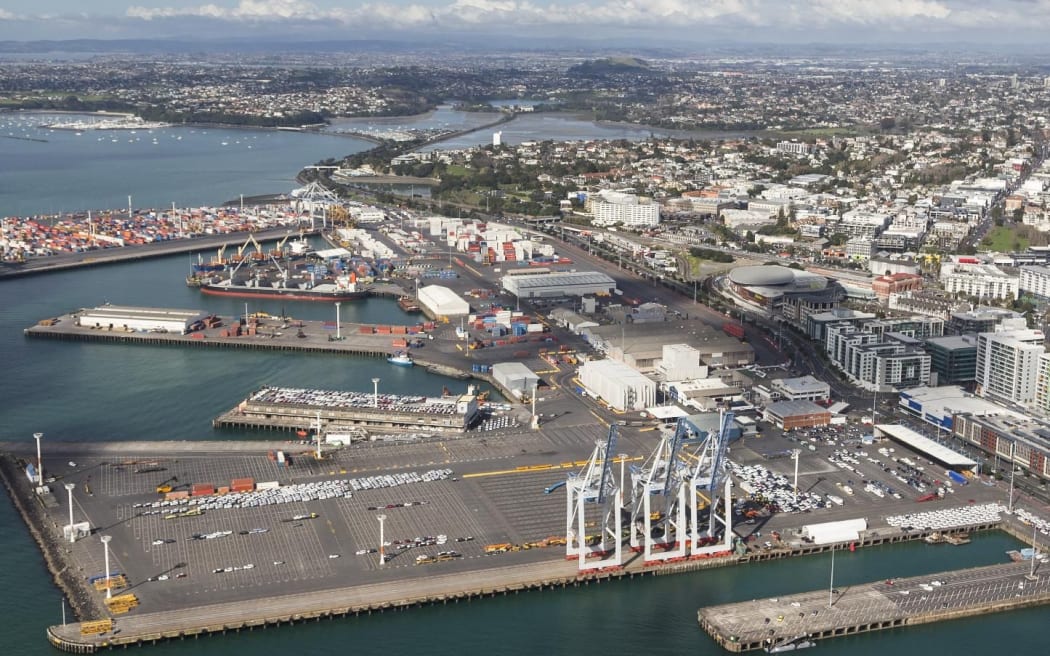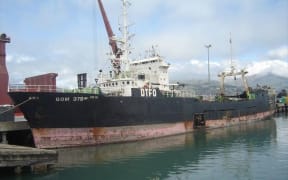Maritime New Zealand is falling short its target for security and safety inspections of suspect foreign ships.

Maritime New Zealand inspected less than half of Priority 1 vessels in the 2014/5 year, below its target of 70 percent. Photo: SUPPLIED / Ports of Auckland
Vessels classed as Priority 1 (P1) are checked in foreign ports before leaving for New Zealand, and once here a high percentage are supposed to be inspected before being allowed to head back out to sea.
When they go onboard, inspectors look for safety hazards, pollution prevention plans, and examine working and living conditions.
In the Asia-Pacific, many ports have the power to detain substandard ships. In addition, nations including Egypt and Niue are on a blacklist.
But the Martime New Zealand (MNZ) annual report showed checks were made on just under half of Priority 1 vessels in the 2014/5 year, well below its target of 70 percent.
Annabel Young of the Shipping Federation said New Zealand had signed up to international treaties and was not pulling its weight.
"We have an international obligation to make sure those ships are safe at sea.
"The other implication is that they're in New Zealand waters, so when they leave the New Zealand port - and many of these ships go from port to port before they leave the country - that they're not as safe as they should be as they go around the coast."
Joe Fleetwood of the Maritime Union said inspecting ships was a basic responsibility of MNZ.
"We've got no international New Zealand shipping lines. They're all basically at the sole behest of international ship owners and yet they dictate what happens in the ports...and now we're going ask them to do the right thing. It's a joke really.
Mr Fleetwood said unless crews were covered by the International Transport Workers' Federation, sailors were exposed.
"Many national flag vessels aren't, so they get away without the inspection.
"That's where Port State Authority - which is Maritime New Zealand - is so vitally important.
"We have to have that and it has to be retained. And if there's no one there Port State Authority - Maritime New Zealand - with the ability to enforce inspecting these vessels then it's a free for all."
Maritime New Zealand said it has had to move staff from inspections to other jobs, and the organisation has lost some experienced people.
"We've also had a couple of resignations and retirements and we're currently working to upskill and train up more maritime officers to PSA [Port State Authority] inspections," said MNZ compliance manager Richie Bower.
MNZ was now back on target to inspect 70 per cent of ships over this financial year.
Mr Bower said the club of countries signed up to check vessels under the Tokyo Memorandum of Understanding was gaining more members, and that would help MNZ reach its goal.
"In essence there's more countries doing more inspections. So that's reducing the 'Priority 1' ships coming to New Zealand.
"There's also a greater emphasis put on our international partner countries to increase the quality of shipping and reduce the level of risk before ships enter New Zealand waters."
The Maritime Union is seeking assurances that inspections of vessels by Maritime New Zealand will be a top priority.
Countries under the Tokyo MOU, which include New Zealand, are able to detain ships when the condition of the vessel or its crew "does not correspond substantially with the applicable conventions."
This is to ensure "the ship cannot not sail until it can proceed to sea without presenting a danger to the ship or persons on board, or without presenting an unreasonable threat of harm to the marine environment."


